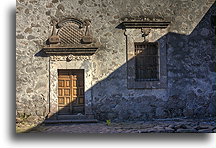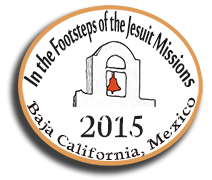Loreto and San Javier
November 20



After spending a night in the desert, we returned to Loreto. It was the most beautiful of all the cities we have visited so far on the Baja and there was another mission for us to see. Misión de Nuestra Seńora de Loreto Conchó founded in 1697 is the greatest Jesuits achievement in this part of Mexico. In fact, it is the oldest still standing mission. Founded earlier, in 1683, San Bruno was the first Christian mission in Baja California, but it has lasted for only 12 years. For the Jesuits, the success of Loreto became the basis for further expansion, the creation of the entire mission system on the peninsula.



Well-preserved church in Loreto has a simple exterior. This is a typical Jesuit stone-built complex. It dates from 1740 and includes not only a church building with a baroque gilded altar, but also enclosed courtyard with workshops and quarters for resident Indians. Mission complex was required back then in order to force Indians to live with missionaries. Indigenous in Baja were simple hunter-gatherers and had never lived in any form of settlements.



Our next stop was an easily accessible village situated in the Sierra de la Giganta. Founded in that area, in 1699 Jesuit Misión San Francisco Javier de Viggé-Biaundó lasted only two years. Local Cochimi population was not very friendly to the Europeans and forced them to stop evangelism. A few years later, a new mission was moved to another site in the vicinity with much better water resources. This is today's village of San Javier. By 1758, Jesuits built what is the most beautiful of all mission churches in Baja California peninsula. The location with high peaks in the background and the architecture of the church make this mission definitely stand out among the others in this region of Mexico.












